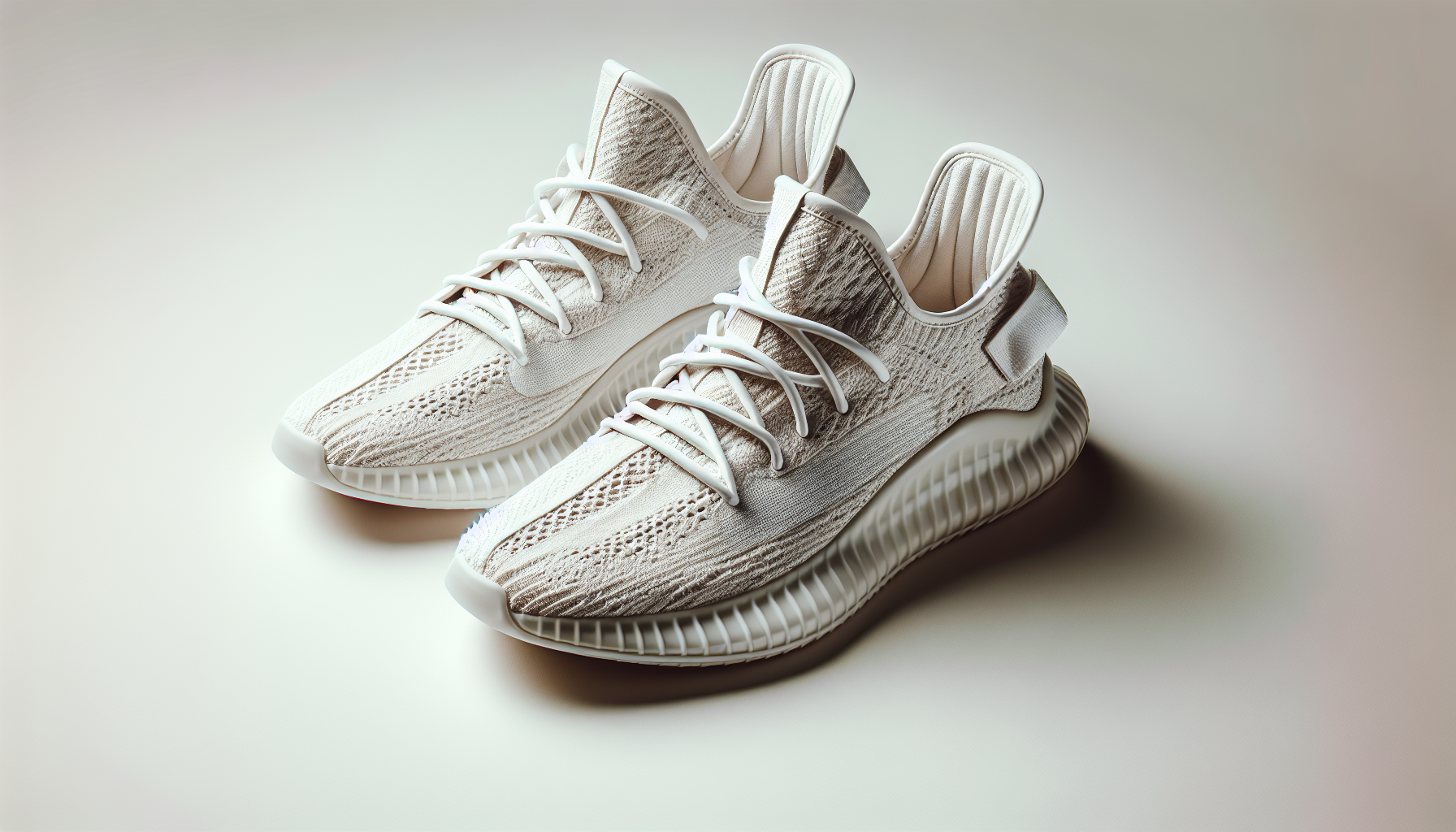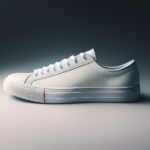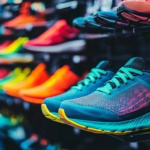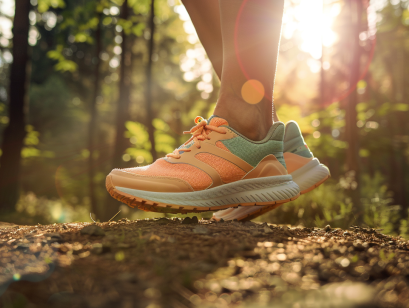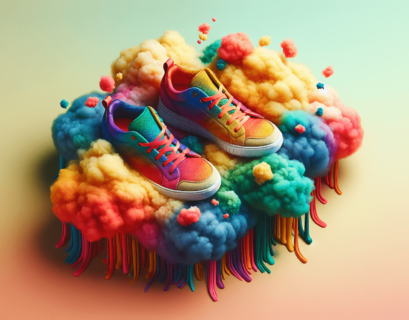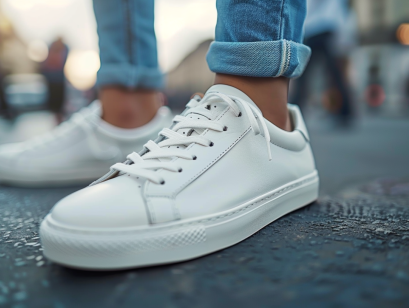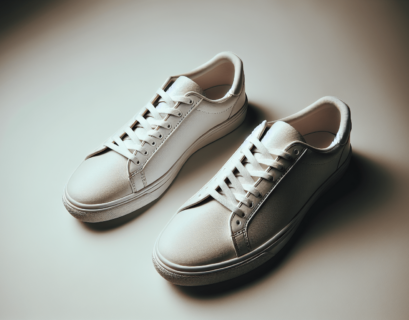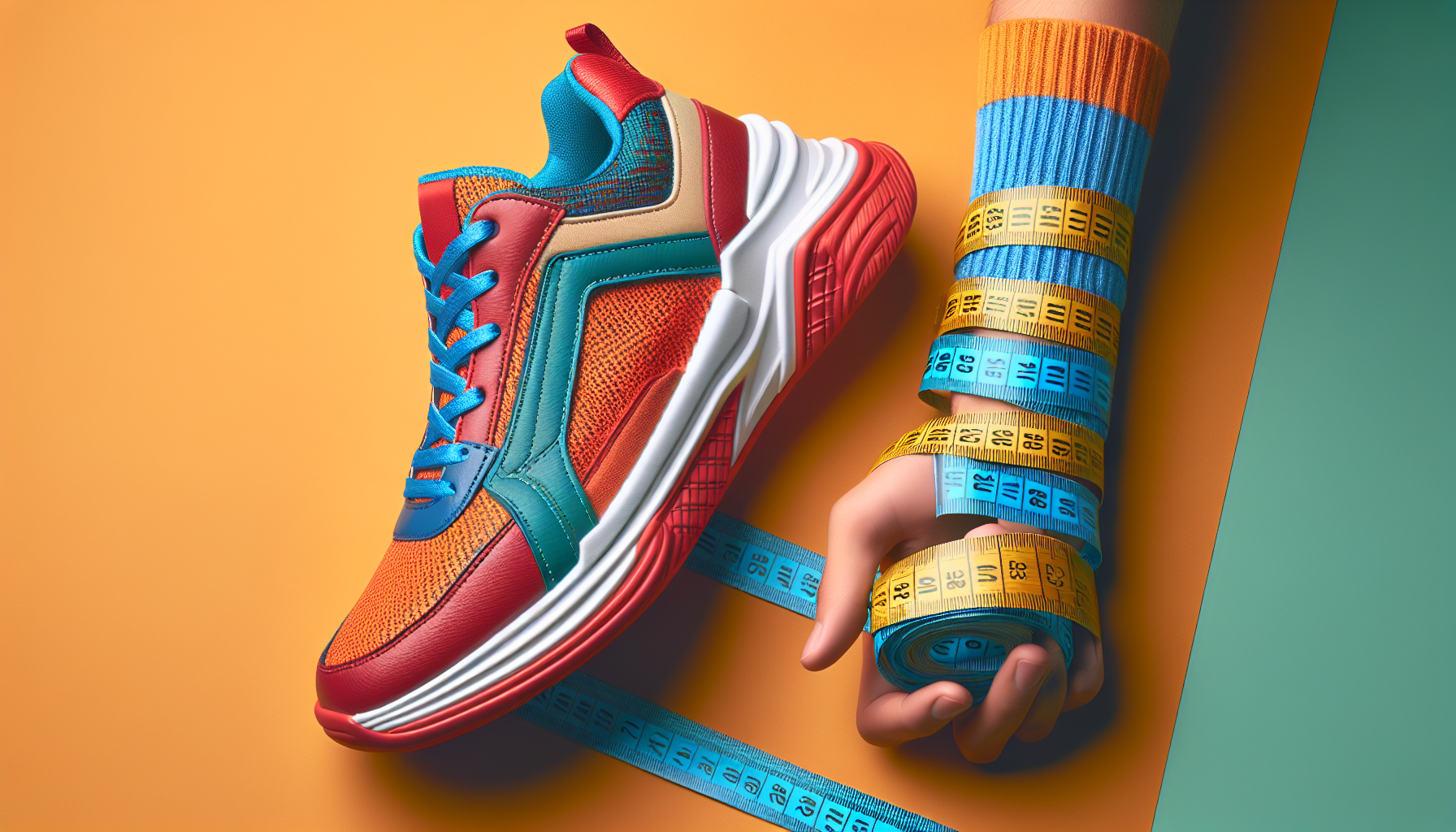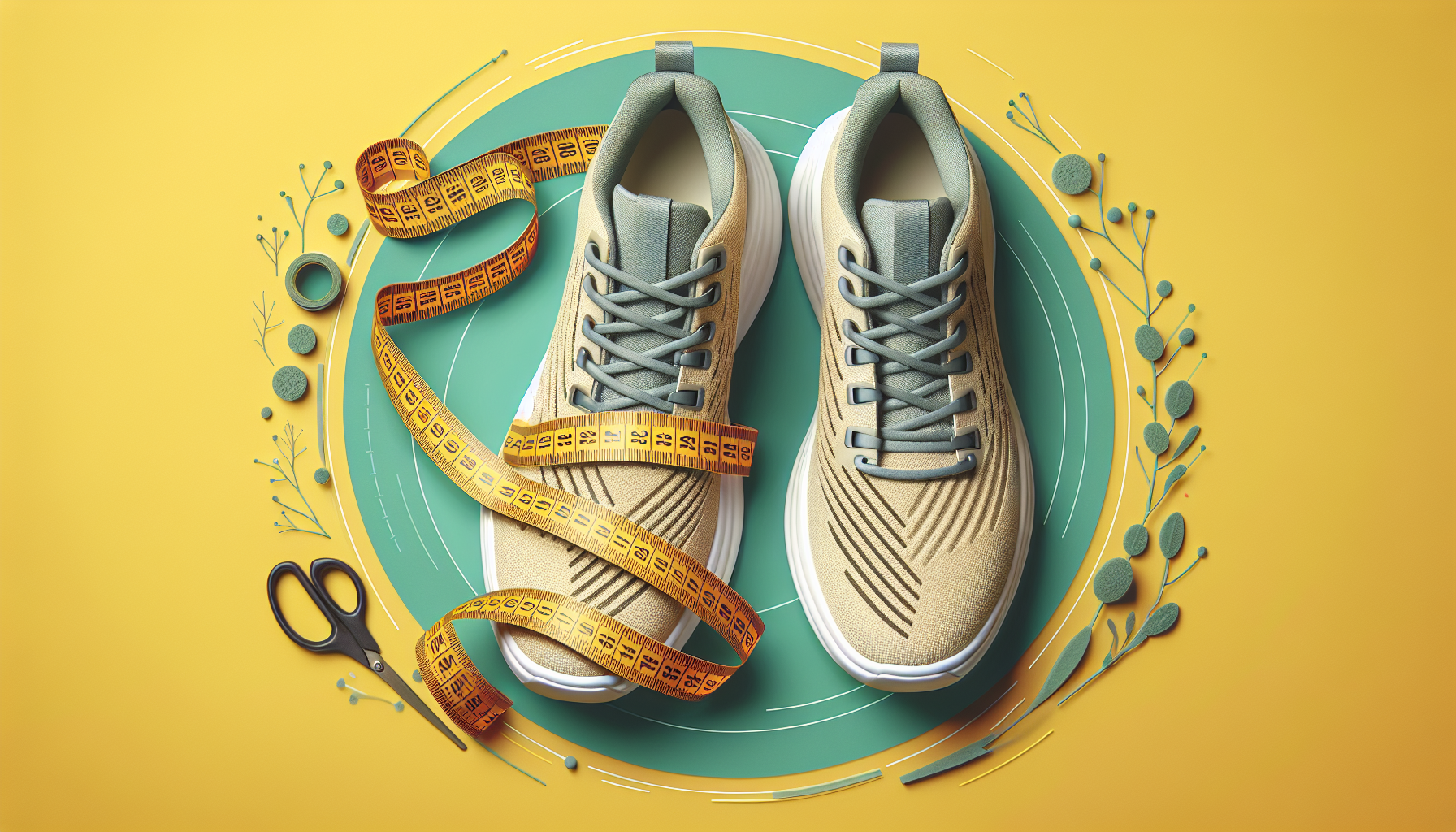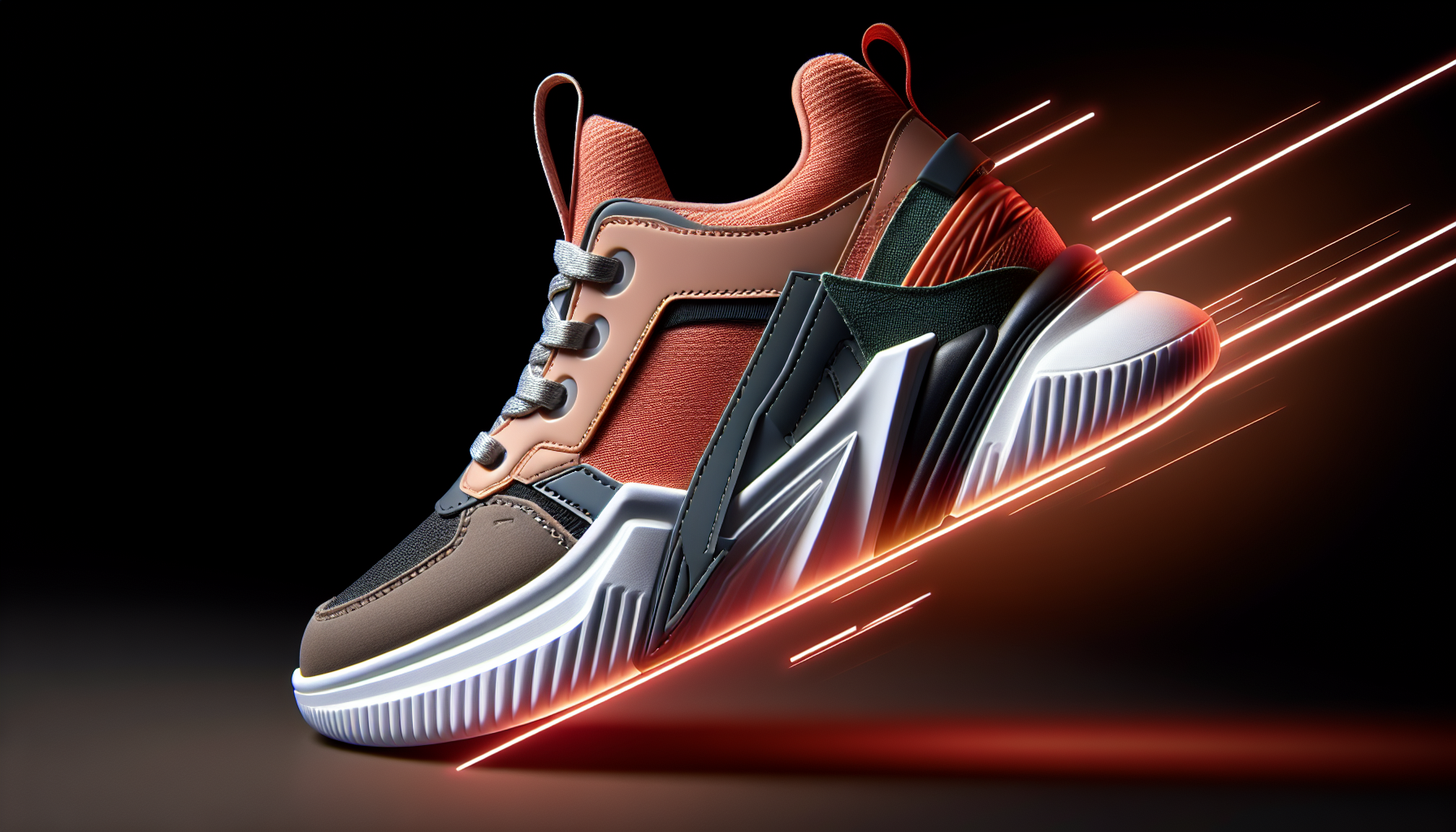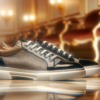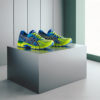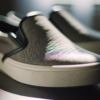So you’ve decided it’s time to upgrade your sneaker game and invest in a pair of top-quality kicks. But with the plethora of options out there, how do you choose the perfect pair that not only looks great but also provides the comfort and durability you need? Look no further, because in this article, you will find the ultimate guide to buying top-quality sneakers. From understanding different sneaker materials to determining the right fit and style for your needs, this comprehensive guide will ensure that you make an informed decision and step out in style with your new favorite pair of sneakers.
Understanding the Basics of Sneakers
Sneakers have become an iconic and essential part of our daily wardrobe. They are no longer just a piece of footwear; they have evolved into a fashion statement, reflecting our personal style and preferences. Whether you’re a sneaker enthusiast or just a casual wearer, it’s important to understand the basics of sneakers to make informed choices when buying a pair. In this guide, we will explore the history of sneakers, the different types of sneakers, popular sneaker brands, and much more. So, let’s dive in and explore the wonderful world of sneakers!
History of Sneakers
The history of sneakers dates back to the late 18th century when people started demanding more comfortable and flexible footwear for various physical activities. It was in the mid-19th century when the first rubber-soled shoes were introduced, marking the beginning of the sneaker revolution. Over the years, sneakers have evolved from being purely functional sports shoes to stylish footwear worn by people from all walks of life. From basketball legends like Michael Jordan launching signature sneaker lines to celebrities collaborating with popular brands, sneakers have become a symbol of status, self-expression, and fashion.
Different Types of Sneakers
Sneakers come in various styles, each catering to different needs and preferences. Understanding the different types of sneakers can help you make the right choice for any occasion. Athletic sneakers are designed for sports and physical activities, providing excellent support, cushioning, and traction. Casual sneakers, on the other hand, are more versatile and can be worn with everyday outfits for a laid-back and comfortable look. Designer sneakers are high-end, luxury sneakers created by renowned fashion houses, combining style and quality craftsmanship. Lastly, limited editions and collaborations are rare and exclusive sneakers that often have a higher resale value, making them highly sought after by sneaker collectors and enthusiasts.
Popular Sneaker Brands
When it comes to sneakers, there are countless brands to choose from, each with its own unique style and reputation. Some of the most popular sneaker brands include Nike, Adidas, Puma, Vans, Converse, New Balance, and Reebok, among many others. These brands have established themselves as leaders in the sneaker industry, constantly pushing the boundaries of design, technology, and innovation. Whether you’re looking for performance-driven athletic sneakers or fashion-forward designer kicks, these brands have a wide range of options to suit your needs and style.
Identifying Your Sneaker Needs
Before embarking on your sneaker shopping journey, it’s essential to identify your sneaker needs. This involves defining your style, considering your lifestyle, and knowing your size. By understanding these factors, you’ll be able to narrow down your choices and find the perfect pair of sneakers that align with your preferences and requirements.
Defining Your Style
The first step in identifying your sneaker needs is to define your personal style. Are you someone who prefers a minimalist and understated look, or do you gravitate towards bold and statement-making footwear? Understanding your style can help you determine which type of sneakers will best complement your overall aesthetic. Consider factors such as color, silhouette, and overall design when defining your style.
Considering Your Lifestyle
Another important factor to consider when buying sneakers is your lifestyle. Are you an athlete looking for performance-enhancing shoes, or are you someone who values comfort and versatility for everyday wear? The type of activities you engage in, whether it’s running, basketball, skateboarding, or simply walking, will dictate the features and functionalities you need in your sneakers. Additionally, consider the environments you’ll be wearing your sneakers in, such as indoors, outdoors, or in different weather conditions.
Knowing Your Size
Knowing your size is crucial when it comes to buying sneakers. Ill-fitting shoes can lead to discomfort, pain, and even injuries. Take the time to measure your feet accurately and understand the sizing system used by the brand you’re interested in. Keep in mind that different brands may have slight variations in sizing, so it’s always a good idea to try on sneakers before making a purchase, especially if you’re buying online. If you’re unsure about your sizing, consult the brand’s size chart or seek guidance from customer service.
Exploring Sneaker Categories
Sneakers have evolved to cater to different needs and occasions, and understanding the different categories can help you make a more informed decision when buying. Let’s explore the major categories of sneakers and their unique characteristics.
Athletic Sneakers
Athletic sneakers are specifically designed for sports and physical activities. They are engineered to provide maximum support, cushioning, and stability to enhance performance and prevent injuries. Whether you’re into running, basketball, tennis, or any other sport, there’s a wide range of athletic sneakers available to suit your specific needs. Look for features such as breathable uppers, responsive cushioning, and durable outsoles when choosing athletic sneakers.
Casual Sneakers
Casual sneakers are versatile and can be worn with a wide range of outfits for everyday occasions. They are typically more fashion-forward and less focused on specific sports performance. Casual sneakers are known for their comfort and style, making them the go-to choice for many people. Look for casual sneakers with trendy designs, premium materials, and cushioning for all-day comfort.
Designer Sneakers
Designer sneakers are the epitome of luxury and style. Created by renowned fashion houses, these sneakers combine high-quality craftsmanship and exquisite materials with unique and eye-catching designs. Designer sneakers often feature premium leathers, elaborate detailing, and branding that sets them apart from mass-produced options. They are highly sought after by fashion-conscious individuals who appreciate the finer things in life.
Limited Editions and Collaborations
Limited editions and collaborations are special releases that generate a lot of excitement in the sneaker community. These sneakers are often produced in limited quantities, making them highly desirable and sought after by collectors and enthusiasts. Collaborations between brands and celebrated individuals or other brands result in unique designs that combine the best of both worlds. Limited editions and collaborations add an element of exclusivity and rarity, making them statement pieces for sneaker enthusiasts.
Materials and Construction
Understanding the materials used in sneakers and the construction techniques involved can help you determine the quality and durability of a pair. Let’s delve into these aspects and gain a deeper understanding.
Recognizing High-Quality Materials
High-quality sneakers are often crafted with premium materials that not only enhance their aesthetics but also ensure longevity and comfort. Look for sneakers made from materials such as genuine leather, suede, canvas, or technical fabrics that are known for their durability and flexibility. Pay attention to the stitching, seams, and overall finish of the sneakers, as these details can indicate the level of craftsmanship and quality.
Understanding Sneaker Construction Techniques
The construction of sneakers greatly influences their overall performance and durability. Common construction techniques include cementing, stitching, and vulcanizing. Cemented construction involves the use of adhesive to attach the upper to the sole, providing flexibility but potentially compromising durability. Stitched construction involves sewing the upper and sole together, offering increased strength and longevity. Vulcanized construction uses heat and pressure to bond the upper and sole, resulting in a more durable and stable shoe. Understanding these construction techniques can help you make an informed decision based on your specific needs.
Life Expectancy of Different Materials
The life expectancy of sneakers can vary depending on the materials used. While high-quality sneakers made from premium materials can last for years with proper care, sneakers made from cheaper materials may wear out more quickly. Leather sneakers, when well-maintained, can withstand the test of time and develop a unique patina over the years, while fabric or mesh sneakers may be more susceptible to wear and tear. Consider the intended use and your personal preferences when choosing the right materials for your sneakers, ensuring they will meet your expectations for longevity.
Decoding Sneaker Terminology
Sneaker enthusiasts and collectors often use specific terminology to describe different aspects of sneakers. Familiarizing yourself with these terms can help you better understand product descriptions and make more informed decisions. Let’s unravel some common sneaker terminology.
Common Footwear Descriptions
When browsing for sneakers, you’ll often come across various terms used to describe their characteristics. Here are a few common examples:
- Upper: The upper refers to the part of the sneaker that covers the foot. It can be made of various materials such as leather, canvas, or mesh.
- Midsole: The midsole is the layer between the upper and the outsole of the sneaker. It provides cushioning and support.
- Outsole: The outsole is the bottom part of the sneaker that comes into contact with the ground. It is usually made of rubber or other durable materials to provide traction.
- Collar: The collar refers to the top edge of the sneaker around the ankle area. It can be padded for comfort or designed for a specific fit.
- Tongue: The tongue is the part of the sneaker that covers the top of the foot and extends under the laces. It helps to protect the foot and keep the laces in place.
Knowing Your Sneaker Parts
Sneakers consist of various components, each serving a specific purpose. Here are a few key parts of a sneaker:
- Eyelets: Eyelets are the holes on the upper of the sneaker that the laces pass through. They allow for adjustability and secure fit.
- Insole: The insole is the removable cushioning layer inside the sneaker that provides comfort and support. It can often be swapped for custom or orthopedic insoles.
- Heel Counter: The heel counter is a stiff insert at the back of the sneaker’s upper, providing stability and support around the heel area.
- Toe Box: The toe box is the area at the front of the sneaker that surrounds the toes. It should have adequate room for toes to move comfortably.
- Swoosh/Logo: The swoosh or logo is the distinctive branding symbol of a sneaker brand. It is often prominently displayed on the side or tongue of the sneaker.
Specialty Vocabulary
The sneaker community has developed its own unique vocabulary. Here are a few examples of specialty terms:
- Hype: Hype refers to the excitement and anticipation surrounding a particular sneaker release. Hyped sneakers are usually in high demand and can sell out quickly.
- Grails: Grails are sneakers that are considered extremely desirable and difficult to obtain. They are often rare, limited editions, or highly sought after by collectors.
- Deadstock: Deadstock refers to sneakers that are no longer being produced or sold by the brand. Deadstock sneakers are often brand new and unworn, making them highly sought after by collectors.
- Colorway: Colorway refers to the specific color scheme and combination used in a sneaker’s design. Sneakers often come in different colorways, allowing consumers to choose their preferred aesthetic.
Sneaker Tech Innovations
Innovation is at the heart of the sneaker industry, with brands constantly striving to introduce new technologies and features to enhance comfort, performance, and style. Let’s explore some of the top sneaker tech innovations that have revolutionized the way we wear sneakers.
Insole and Sole Technology
Insole and sole technology play a crucial role in the comfort and performance of sneakers. Brands have developed various cushioning systems to provide optimal shock absorption, energy return, and support. Examples include Nike’s Air technology, Adidas’ Boost technology, and New Balance’s Fresh Foam. These innovations utilize air capsules, responsive foam, or other proprietary materials to deliver superior cushioning and impact protection.
Breathability and Waterproof Innovations
Breathability and waterproofing are essential features for sneakers, especially in varying weather conditions. Sneaker brands have introduced technologies to enhance breathability, ensuring that your feet stay cool and dry during activities. Mesh uppers, engineered knits, and breathable membranes such as Gore-Tex are commonly used to facilitate airflow while keeping water out. These technologies allow you to enjoy your sneakers comfortably in different climates and environments.
Smart Sneaker Features
Technology has even found its way into sneakers, with smart features that merge fashion with functionality. Smart sneakers often incorporate sensors, Bluetooth connectivity, and smartphone integration, offering features like step tracking, customizable lighting, and adaptive fit. These futuristic sneakers cater to tech-savvy individuals who value both style and cutting-edge technology. With smart sneakers, you can embrace the future while making a fashion statement.
Sneaker Care and Maintenance
To keep your sneakers looking fresh and performing at their best, proper care and maintenance are essential. Let’s explore some key tips and techniques to keep your beloved sneakers in top shape.
Cleaning Your Sneakers
Regular cleaning is crucial to remove dirt, stains, and odors from your sneakers. Depending on the materials, you may need different cleaning methods. For fabric or mesh sneakers, start by removing any loose dirt or debris with a soft brush or cloth. Then, create a mild cleaning solution using water and a gentle detergent. Gently scrub the sneakers using a soft brush or sponge, paying attention to any stained areas. For leather or suede sneakers, use specialized cleaning products or consult a professional to avoid damaging the materials. After cleaning, allow your sneakers to air dry naturally, avoiding direct heat sources.
Proper Storage Techniques
Proper storage can significantly extend the life of your sneakers. When not in use, it’s important to store them correctly to prevent creasing, deformation, or color fading. Here are a few tips for proper sneaker storage:
- Keep your sneakers in a cool, dry place away from direct sunlight, which can cause yellowing and deterioration of materials.
- Avoid stacking or crushing your sneakers, as it can lead to permanent damage. Use shoe trees or stuff them with acid-free tissue paper to maintain their shape.
- Store your sneakers in their original boxes or use clear plastic shoeboxes to protect them from dust and other contaminants.
- Consider investing in a shoe rack or display case to showcase your sneaker collection while keeping them organized and easily accessible.
Increasing Sneaker Longevity
Taking steps to increase the longevity of your sneakers can help preserve their appearance and functionality over time:
- Rotate your sneakers: Wearing the same pair of sneakers every day can lead to excessive wear and tear. Rotate between multiple pairs to allow each pair to rest and recover.
- Apply a protective spray: Depending on the materials of your sneakers, using a protective spray can add a layer of resistance to water, stains, and UV damage. Follow the instructions on the spray to ensure proper application.
- Avoid extreme conditions: While sneakers are designed to withstand various conditions, avoiding extreme heat, cold, and excessive moisture can help prolong their lifespan. Take extra care during activities like hiking or intense sports that may subject your sneakers to harsh conditions.
- Regularly inspect and maintain your sneakers: Check your sneakers for any signs of wear, loose stitching, or damage. Promptly address any issues by seeking repairs or replacements to prevent further damage.
Mastering Sneaker Shopping
Now that you have a good understanding of the basics of sneakers, it’s time to master the art of sneaker shopping. By following these tips and techniques, you can ensure a successful sneaker shopping experience.
In-Store vs. Online Shopping
Deciding between in-store and online shopping for sneakers depends on your preferences and requirements. In-store shopping allows you to try on sneakers, feel the materials, and get personalized assistance from sales associates. It also provides the opportunity to see the sneakers up close and assess their quality. On the other hand, online shopping offers convenience, a wider range of options, and the ability to compare prices and reviews. Consider your priorities, such as the need for a precise fit or the desire for a specific pair, when deciding how to approach sneaker shopping.
Nailing the Right Fit
Getting the right fit is paramount when buying sneakers. Ill-fitting sneakers can cause discomfort, blisters, and even affect your performance in sports activities. It’s recommended to measure your feet using a sizing chart provided by the brand and compare it to their specific recommendations. Keep in mind that different brands or models may fit differently, so it’s always helpful to read reviews or consult sizing guides from other customers. If possible, try on sneakers in person or opt for brands with flexible return or exchange policies to ensure a perfect fit.
Spotting Fake Sneakers
With the popularity and demand for sneakers, counterfeit products have become prevalent in the market. Spotting fake sneakers can be challenging, but there are key indicators that can help you identify authentic products. Pay attention to details such as the quality of materials, stitching, and logos. Look for specific brand logos, holograms, or serial numbers that are usually featured on authentic sneakers. Research and familiarize yourself with the specific characteristics and details of the sneakers you’re interested in to detect any inconsistencies. If a deal seems too good to be true or a seller cannot provide sufficient proof of authenticity, it’s best to exercise caution and consider alternative options.
Investing in Sneakers
Sneakers have become more than just casual footwear; they have become investment pieces. Whether you’re interested in reselling sneakers, building a collection, or protecting your investment, here are some key considerations.
Sneaker Reselling
Sneaker reselling has become a thriving industry, attracting entrepreneurs and sneaker enthusiasts alike. Investing in limited editions, collaborations, or rare sneakers can offer the opportunity for substantial resale profits. It requires thorough research, knowledge, and understanding of the sneaker market, including trends, demand, and authenticity. Building connections within the sneaker community can also provide valuable insights and access to exclusive releases. Keep in mind that reselling sneakers involves risks, and success depends on various factors such as timing, market demand, and overall condition of the sneakers.
Collecting Sneakers
If you have a passion for sneakers, building a collection might be a rewarding endeavor. Start by identifying your specific niche or theme, whether it’s focusing on a specific brand, designer, or era. Research and expand your knowledge about different sneakers, their histories, and their significance in the sneaker culture. Be aware that collecting sneakers requires financial investment, storage space, and proper preservation techniques. Take pride in curating a collection that reflects your personal taste, style, and appreciation for the artistry behind sneaker design.
Protecting Your Investment
If you consider sneakers as valuable investments, it’s important to protect your collection by implementing proper storage and insurance measures. Ensuring sneakers are stored in a climate-controlled environment away from direct light, moisture, or extreme temperatures will help maintain their condition and value. Consider obtaining insurance coverage that specifically protects your collection in case of loss, theft, or damage. Documenting your collection through photographs, receipts, and certificates of authenticity is also recommended. Regularly update your inventory as you acquire new sneakers and periodically evaluate the market value of your collection.
Final Thoughts on Buying Quality Sneakers
Buying sneakers can be an exciting and fulfilling experience, especially when armed with the knowledge and understanding of the sneaker industry. By understanding the history, different types, and popular brands, you can make informed choices that align with your style and needs. Pay attention to materials, construction techniques, and technological innovations to ensure optimal comfort, performance, and longevity. Master the art of sneaker shopping by considering in-store versus online options, nailing the right fit, and spotting counterfeit products. Whether you’re buying sneakers for fashion, sports, or collecting, take pride in your choices and enjoy the journey of exploring the world of top-quality sneakers. Remember, trends may come and go, but timeless styles and quality will always stand the test of time.

